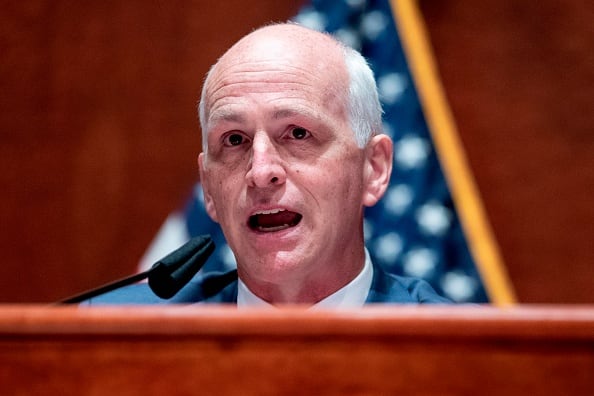WASHINGTON — Defense spending experts are suggesting procurement and research spending could take a hit in what is expected to be an effectively flat defense budget for fiscal year 2022.
Reports this week peg the Pentagon’s share of the overall defense budget in the range of $704-$708 billion. That’s in line with the $705 billion the department received as part of the fiscal year 2021, but department officials have claimed anything less than 3-5 percent growth annually amounts to a cut due to inflation.
“If this is the number that’s included in the budget request, we would view it as positive because the Biden Admin would be signaling to Congress that it doesn’t want cuts in defense,” analyst Roman Schweizer of Cowen wrote in a letter to subscribers.
“That would displease liberal progressives (who want big cuts) and defense hawks (who want +3-5% annual growth). In Washington, when both sides are angry, that’s called a compromise. There will be a lot of griping along the way, but it’s the kind of outcome that probably makes sense.”
RELATED

Calculations from Byron Callan, an analyst with Capitol Alpha Partners, show that when required spending is subtracted from that top line figure, it leaves about $227 billion in the procurement and research, development, testing and evaluation (RDT&E) funds.
While that is certainly a big pile of money for the department , in context, it’s actually a cut. The FY21 NDAA authorized $247 billion for that pot of money, and the FY22 plan laid out by the lame duck Trump administration called for $243 billion. And because certain procurement programs are growing in size, that means RDT&E funds may end up the loser, Callan predicted in a letter to subscribers.
“DoD plans have shown growth in Procurement as major weapons systems, such as Columbia-class submarines, B-21 bombers, [the Ground Based Strategic Deterrent], Army modernization programs, and stepped-up F-35 buys to occur over the balance of the decade,” he wrote. “RDT&E funding declines as these transitions occur.”
It is traditional for a new administration to delay its budget rollout by several months while it takes a hard look at choices that were set up by the previous administration. The Biden team is no different, with the budget expected to roll out in early May. Kathleen Hicks, the deputy secretary of defense, has said she is focusing her attention on reviewing a few key areas, including shipbuilding and nuclear modernization.
There are some signs of where the Biden administration might look to find savings, thanks to an “interim” national security guidance document released last week.
That document called for “clear priorities” within the defense budget, stating “we will assess the appropriate structure, capabilities, and sizing of the force, and, working with the Congress, shift our emphasis from unneeded legacy platforms and weapons systems to free up resources for investments in the cutting-edge technologies and capabilities that will determine our military and national security advantage in the future. We will streamline the processes for developing, testing, acquiring, deploying, and securing these technologies.”
Any defense cuts will be welcomed by progressive advocates and members of Congress, who argue that the defense budget needs to come down in favor of COVID-19 relief and other domestic priorities.
A report Wednesday from the Center for American Progress, a liberal-leaning think tank, called for dropping the overall national security topline from a projected $755 to around $700, which would include pausing production on the F-35 joint strike fighter in favor of buying more B-21 bombers, cutting funds for new aircraft carriers, and reducing end strength.
Congressional Republicans, meanwhile, have already started pushback on any budget cuts, with key lawmakers warning Biden in a recent letter to not just reject cuts, but push for the annual 3-5 percent growth Pentagon leaders have said they need.
House Armed Services Committee Chairman Adam Smith, D-Wash., this week brushed aside those demands.
“How you spend the money is what matters,” he said at a Brookings event March 8. “Well, it’s got to be 3 to 5 percent — on what?”
RELATED

In broader remarks emphasizing more modest, cost-effective goals for the military, Smith said arguments over the top line are stealing oxygen from more important debates over how to size the military for the country’s security goals and procurement reforms that will stretch taxpayer dollars.
“We have wasted a spectacular amount of money on weapons systems that either haven’t worked at all or who have not lived up to their promise. Our acquisition and procurement process over the last 20 years can only be described as a complete disaster,” Smith said. “We can complain about the money that we wasted, but that’s gone. What we have to make sure of is that we don’t waste any more.”
On China, Smith worried that analysis showing the U.S. would struggle in a war is feeding an impossible, undesirable goal, to dominate China. Washington instead ought to rely on diplomacy and allies more and the military less, he said.
“The wrong message to get out of that is ‘oh my gosh, we have got to build a military that enables us to dominate China,” Smith said. “What we need is we need an entire approach that deters China, and others, from doing the things we don’t want them to do.
Aaron Mehta was deputy editor and senior Pentagon correspondent for Defense News, covering policy, strategy and acquisition at the highest levels of the Defense Department and its international partners.
Joe Gould was the senior Pentagon reporter for Defense News, covering the intersection of national security policy, politics and the defense industry. He had previously served as Congress reporter.








